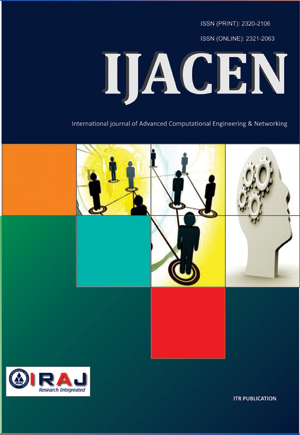Publish In |
International Journal of Advance Computational Engineering and Networking (IJACEN)-IJACEN |
 Journal Home Volume Issue |
||||||||
Issue |
Volume-4, Issue-9 ( Sep, 2016 ) | |||||||||
Paper Title |
Determinant Factors Toward Healthcare Cloud Services – User Prespective Differences | |||||||||
Author Name |
Shu-Ping Lin, Chen-Lung Yang, Thao-Minh Ho | |||||||||
Affilition |
Department of Technology Management, Chung Hua University, Hsinchu, Taiwan Ph.D. Program of Technology Management, Chung Hua University, Hsinchu, Taiwan | |||||||||
Pages |
16-21 | |||||||||
Abstract |
Along with recent advances in cloud technology and its integration with technical scientific services, healthcare cloud services with evolutionary, ubiquitous, on-demand access to virtually endless resources in combination with a pay-peruse model that allows for new ways of developing, delivering and using services has performed very well in handling the shortcomings of the present healthcare industry, subsequently become a fast growing area in healthcare industry worldwide and has been regarded as a new opportunity for the future healthcare industry. Nonetheless, despite abundant benefits of cloud technology, cloud-based solutions remain being in the preliminary stage of development in Taiwan; hence, understanding of the determinants of acceptance toward this service in order to better plan and design appropriate healthcare cloud application service model will significantly promote the development of healthcare cloud devices and systems. Taking these premises, this study aims to (1) explore the determinants influencing users’ intention behavior toward Healthcare Cloud Services (HCS) by integrating Health Belief Model (HBM), Technology Acceptance Model (TAM), Innovation Diffusion Theory (IDT) and Information System Success (ISS) and (2) identify actual key service factors based on the achieved extent of effects to be the foundation for proposing the most effective service improvement solutions. Due to previous studies indicated that customer needs of public health program design depend on their health status and the emerging occurrence of the “sub-health” group in this era which has motivated this research for conducting sufficient exploration on real demands of different kinds of users toward healthcare cloud services, this study targets two kinds of respondents (i.e., healthcare cloud service subhealth users and chronic/diabetes self-management care cloud services) to be the research objects. Through using questionnaire survey and convenience sampling method for collecting data, 311 valid responses out of 350 distributed survey questionnaires were returned in case of healthcare cloud service subhealth users (response rate of 89%) and 233 valid responses out of 320 distributed questionnaires (72.8%) were returned in case of chronic disease/diabetes self-management care cloud services. Structural Equation Mode (SEM) and multiple-group SEM were then adopted for data analysis. With the achieved key factors influencing users’ use intention, especially in accordance with each user group, this study hopes to provide relevant units in the healthcare industry and service industries with helpful designing and planning references. ____________________________________________________________________________________________________ Index terms- Technology acceptance model (TAM), Innovation diffusion theory (IDT), Health belief model (HBM); Information system success (ISS), Healthcare cloud services (HCS). | |||||||||
| View Paper | ||||||||||